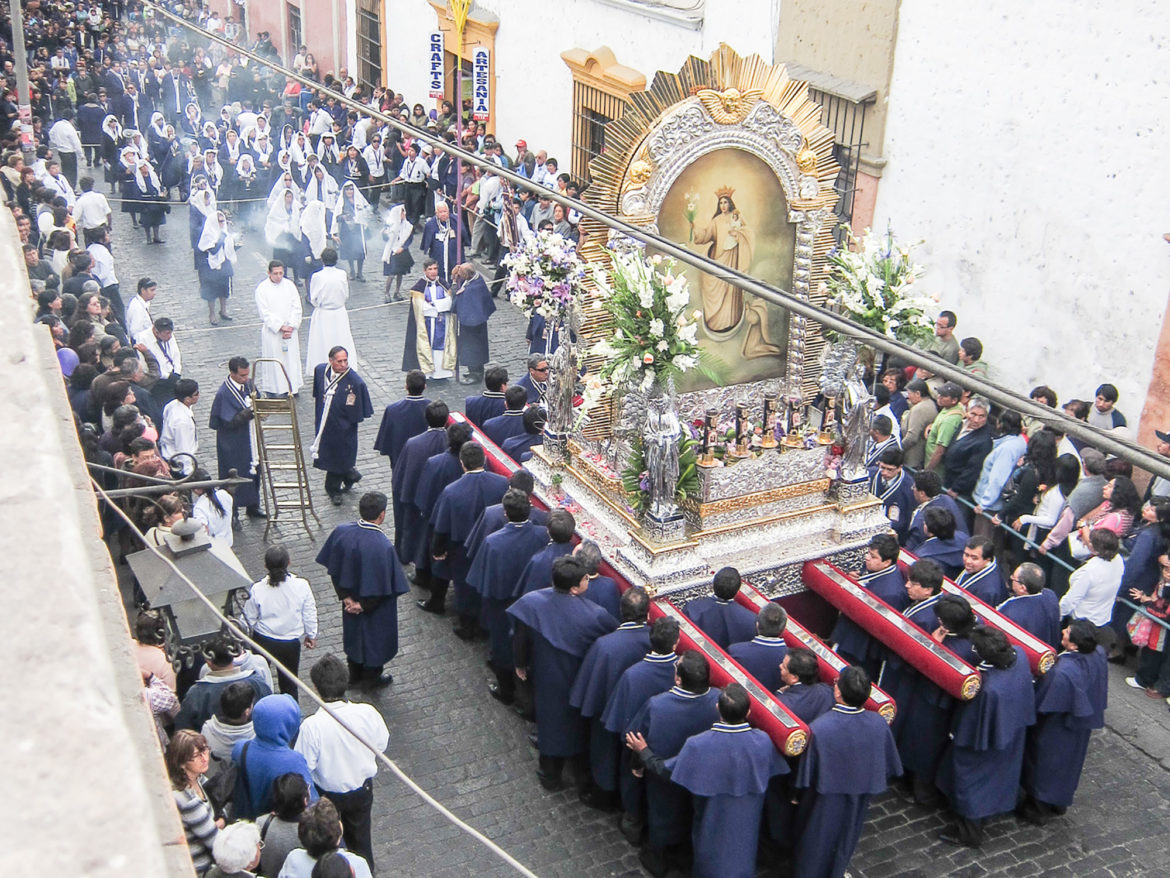Picturesque squares, wide boulevards and cosmopolitan flair give Arequipa a different vibe than the rest of Peru.
Known as “The White City”, Arequipa is the second largest city in Peru. It has an upscale, European feel – clearly more well off than other parts of the country. For the first time, we saw babies in strollers, instead of slings – a true sign of wealth and status. A novelty we hadn’t come across since being in Peru.
The overnight bus ride from Cusco took ten hours. It would be the first of many long trips throughout our time in South America. It’s always a bit unsettling those first few moments arriving in an unknown city. Trying to figure out exactly where you are, where you’re going and where you’re staying. I’s especially challenging when sleep deprived. But Arequipa’s picturesque setting, temperate climate and metropolitan feel instantly welcomed us.
The city’s main square, is made up of majestic palms, babbling fountains and plenty of pigeons hoping to be fed.
Bright yellow taxis abound on the surrounding roads as motorcyclists weave in and out of traffic. Pedestrians make their way on the sidewalks, stepping over the occasional sleeping dog. Beautiful old colonial buildings, carved from sillar stone (white volcanic rock), give the city its unique white aesthetic.
Colonial House Inn, provided a cozy and convenient home base for our stay. From the awesome rooftop deck, we got a clear view of El Misti, the city’s active guardian volcano. Due to its proximity and a history of explosive eruptions, it’s considered one of the world’s most dangerous volcanoes. But from our elevated perch, it simply seemed like a mirage out in the distance. Every morning, we enjoyed breakfast there. And in the late afternoon, we’d catch up in our journals, sharing a large Arequipeña beer while waiting for the sun to set. Our rooftop time was so peaceful despite being in the direct line of fire should El Misti decide to erupt again.
Off the main square, we took time to explore some of the city’s charming residential areas.
To the north of the main plaza, Barrio de San Lazaro is the oldest quarter in Arequipa. Its white-washed buildings create a lovely aesthetic and live up to the city’s nickname. From there, we headed west towards the suburban neighborhoods of Cayma and Yanahuara, lined with colorful colonial houses. The tranquil plaza in Yanahuara offers panoramic views of the valley including, of course, El Misti. Strolling the grounds of Selva Alegre park, we sampled our first buñuelo. Essentially a fried donut served with sweet syrup, this common Arequipa snack is best enjoyed hot from the frying pan.
South of the Plaza del Armas, we perused the aisles of the bustling farmer’s market. Here, heavily adorned mannequins of the Virgin Mary, housed in large glass boxes, watch over the vendors and shoppers. A reminder of the heavy Catholic influence, not only in Peru, but throughout all of South America.
As luck would have it, our time in Arequipa coincided with the Lord of Miracles festival. This tradition dates back to the 17th century when a mural of Christ survived a massive earthquake. To honor this event, devout Catholics dress in purple robes and join a somber procession through town behind a huge replica of the original mural. Led by priests and acolytes, some participants even evoke Jesus’ suffering by carrying wooden crosses on their backs.
After observing the festivities from street level, we headed to the rooftop of our guesthouse for a bird’s eye view. As church bells tolled and incense wafted through the air, we reflected on the fact that this festival has taken place continuously for 400 years. Even more amazing is that El Misti has been actively looming over this land long before a Lord of Miracles had even been born. Over 10,000 years to be exact. Now that’s a miracle.

